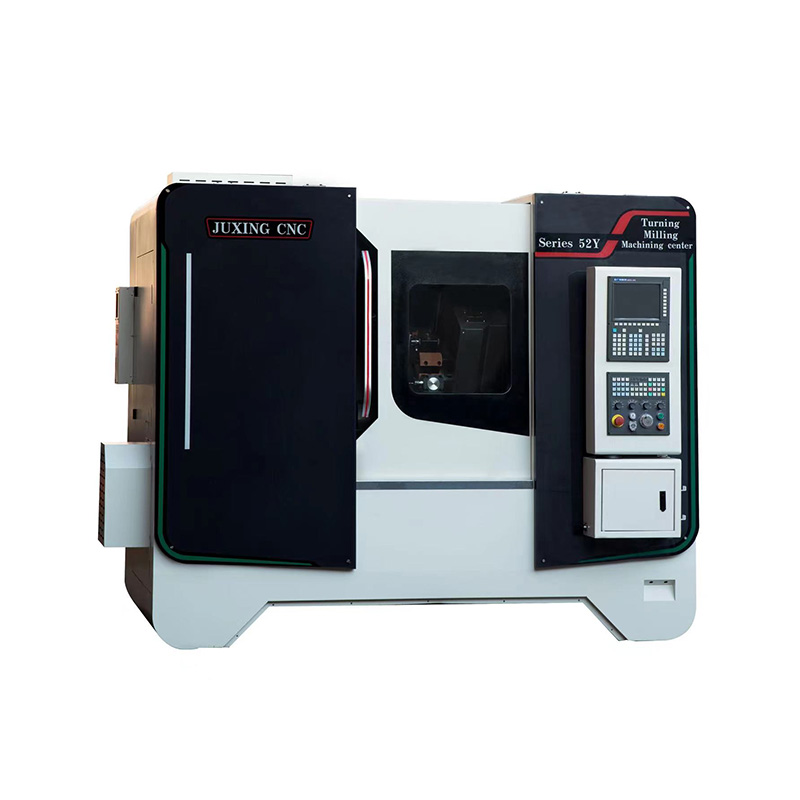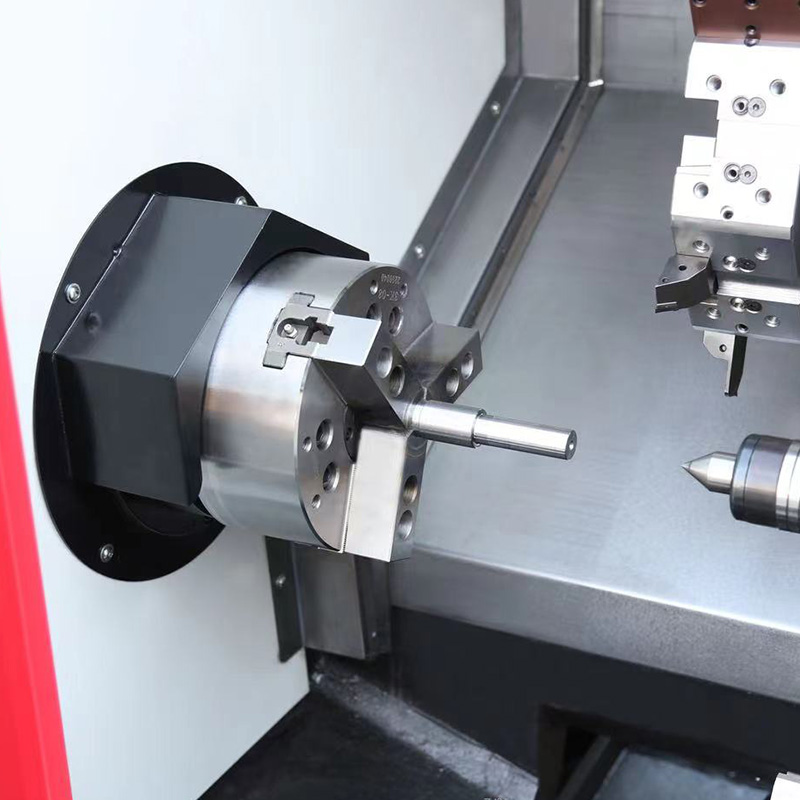CF32 Hydraulic Clamping CNC Polygon Turning Machine
Cat:Small Polygon Lathe
CF32 hydraulic clamping CNC polygon lathe is designed for milling small and medium-sized high-precision parts, which can mill square, octagonal, hexag...
See DetailsIn the realm of advanced manufacturing and machining, Five Axis CNC milling machines represent a pinnacle of technological capability. These machines offer distinct advantages over their more traditional counterparts while also presenting certain challenges and considerations.
Advantages of Five Axis CNC Milling Machines
Complex Geometries: One of the primary advantages of Five Axis CNC milling machines is their ability to machine complex geometries with intricate details. Unlike three-axis or even four-axis machines that are limited in their movement along certain axes, five-axis machines can move the cutting tool across five different axes simultaneously. This capability allows for the production of highly complex parts and components that would be difficult or impossible to achieve with fewer axes.
Reduced Setup Time: Five Axis CNC milling machines often incorporate advanced features such as automatic tool changers and probing systems. These features streamline the setup process and reduce the time required for tool changes and part alignment. As a result, manufacturers can increase their productivity and reduce downtime between machining operations.
Improved Accuracy and Precision: The additional axes of movement in five-axis CNC machines contribute to enhanced accuracy and precision in machining operations. By orienting the cutting tool along multiple axes, manufacturers can achieve tighter tolerances and finer surface finishes on their machined parts. This is particularly beneficial in industries such as aerospace, automotive, and medical, where precision is critical.
Single Setup Machining: Five-axis CNC milling machines enable "done-in-one" machining, where complex parts can be completed in a single setup. This reduces the need for multiple setups and re-fixturing, which not only saves time but also potential errors introduced during part handling and repositioning.
Versatility in Machining Operations: With the ability to tilt and rotate the workpiece and cutting tool in multiple directions, five-axis CNC machines can perform a wide range of machining operations. This includes contouring, 3D profiling, sculpting, and machining undercuts. Manufacturers can use these machines to produce a variety of parts, from turbine blades to mold cavities, efficiently and accurately.
Disadvantages of Five Axis CNC Milling Machines
Cost of Equipment and Maintenance: One of the primary drawbacks of Five Axis CNC milling machines is their initial cost. These machines are typically more expensive than three-axis or four-axis machines due to their advanced technology and complexity. Additionally, the maintenance costs can be higher, as they require specialized knowledge and training for upkeep and repair.
Complexity in Programming: Programming a Five Axis CNC milling machine requires a higher level of skill and expertise compared to programming simpler machines. The programming software must account for the simultaneous movement of multiple axes and coordinate transformations, which can be complex and time-consuming. This may necessitate investment in training or hiring skilled CNC programmers.
Tooling and Fixture Considerations: Achieving results with a five-axis machine often requires specialized tooling and fixtures. The design and procurement of these fixtures can add to the overall cost and complexity of machining operations. Moreover, the setup of workpieces in five-axis machines may be more challenging compared to traditional machines, requiring careful consideration of part orientation and clamping strategies.
Potential for Interference: Five-axis CNC milling machines have a higher risk of tool and workpiece interference due to the increased range of motion and complex part geometries. Collision detection systems and careful simulation of machining operations are essential to prevent costly errors and damage to the machine or workpiece.
Operator Skill Requirements: Operating a five-axis CNC milling machine effectively requires operators with specialized skills and knowledge. They must understand the machine's capabilities, programming languages, and troubleshooting techniques. Training and retaining skilled operators can be a challenge for some manufacturers.

